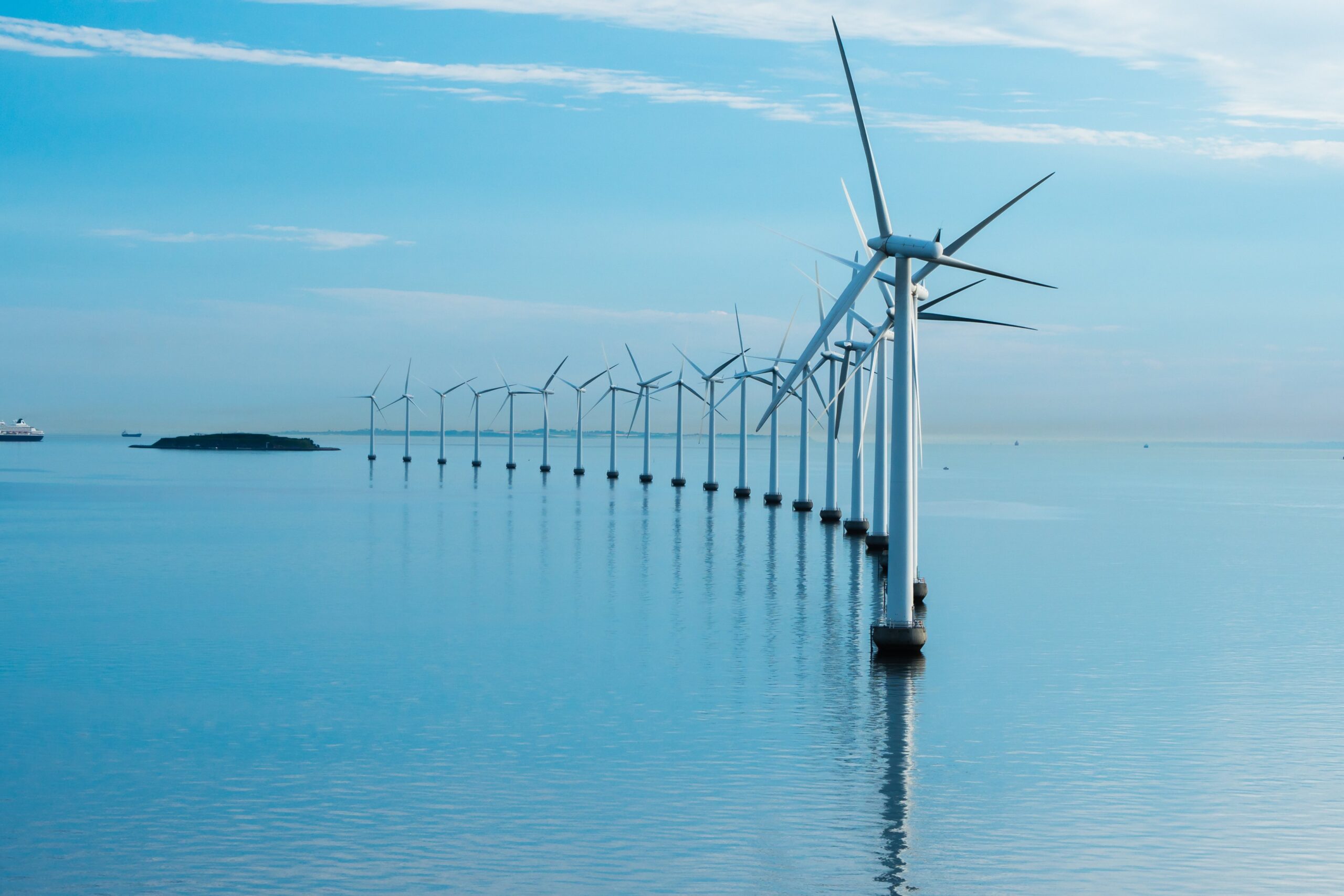There is no denying that we live on a blue world, as the oceans cover over 70% of our planet. Everything we breathe, do, pollute, degrade and dismantle is directly tied to the ocean, and ultimately, us. While the U.S. Congress recently passed its first major climate legislation with the Inflation Reduction Act, leading scientists and policy experts have already handed Biden the blueprint for working with our oceans to fight climate change.
“The ocean is already a climate solution for us,” states ocean-climate policy expert Jean Flemma, who also contributed to the Blueprint for Ocean Climate Action. “It’s been absorbing our greenhouse gas emissions, along with the heat being generated from those emissions, for all of industrial time.” Essentially, if it wasn’t for the ocean, the climate impacts we’re already seeing today would be incredibly worse.
Congress Passes Climate Bill
As President Biden signed the Inflation Reduction Act (IRA) into law this past week, Senate majority leader Chuck Schumer stated, “To the tens of millions of young Americans who have spent years marching, rallying, and demanding that Congress act on climate change, this bill is for you.”
The Inflation Reduction Act is historic in the sense that it is the largest spending package passed in the U.S. that addresses the global climate crisis, with approximately $406 billion designated for alternative energy and climate change programs over the next ten years. It is estimated that the clean energy projects included in the package will reduce emissions by up to 40% by 2030. With Biden promising to reduce our nation’s greenhouse gas emissions 50% by 2030, this ten-year plan is meant to kickstart the United States reaching its goals.
Although this is a start, it will still keep the U.S. behind in meeting the commitments proposed in the Paris Climate Accord. Along with this, the bill also makes some appalling compromises with fossil fuel development that will directly impact coastal, low-income, and communities of color in the Gulf South and Alaska by creating even more opportunities for drilling on federal lands and waters. Because of the many compromises made with the top Democratic recipient of fossil fuel money Senator Joe Manchin (D-WV), many climate activists see dark times ahead and recognize that more must be done.
“We live in an age of advocacy where leading with hope is more critical than ever – that’s why the Inflation Reduction Act feels so controversial to me as a young environmentalist,” said Mina Adabag, a Youth Leadership Council member for EarthEcho International and founder of the Greater Twin Cities High School Environmental Coalition. “It’s difficult to translate the profound hope that this decision inspires while also acknowledging the immense work that still needs to be done, particularly due to the environmental justice compromises made within the act.”
‘The ocean is our greatest ally’
“A healthy ocean is essential to all life on earth,” states Nicolas Lama, a fellow EarthEcho Youth Leadership Council member and student at Columbia University. As temperatures continue to rise, our most powerful tool for carbon sequestration, the ocean, is bearing the brunt of our actions.
The world has lost over 14% of our coral reefs in the last decade. Since the start of the Industrial Revolution, the ocean’s acidity has increased over 25%. This altered chemistry is causing ocean life that utilizes calcium carbonate, such as corals, to survive, but it is also causing oysters, clams, and crabs, to slow down their growth and even die because of their dissolving calcium carbonate structures.

The average heat of our ocean, which determines processes such as currents, sea level rise, and migration routes for marine life that millions of people rely on for food and income, has steadily risen since the 1950s – and over 90% of the excess heat we have generated from greenhouse gas emissions has been absorbed and stored within our seas. These catastrophes greatly influence loss of biodiversity and changes in weather all over the planet, but also take away more opportunities for climate mitigation and solutions.
Lama further emphasized that “in environmental conservation, our ocean is too often framed solely as a victim of climate change. Instead, the ocean is our greatest ally against climate change, and prioritizing ocean-based climate solutions is crucial to reducing greenhouse gas emissions.”
‘Biden has the goals’
The Biden administration has expressed the need to prioritize the ocean as a climate solution. On World Oceans Day in June 2022, Biden celebrated by announcing a plethora of notable steps his administration will take to both conserve our oceans and utilize oceans in order to fight against the climate crisis. Some of his ocean climate related goals include:
|
The ocean was not entirely left out of the IRA which includes some historic investments, such as $2.6 billion for coastal restoration and $3 billion to help decarbonize U.S. ports and shipping systems. Coastlines provide a natural buffer for climate mitigation and adaptation, and if ports were a nation, they would be the eighth largest emitter of greenhouse gases globally, so these initiatives would help against the climate crisis.
On the other hand, the Democrat’s bill also opens 600 million acres of oceans to leasing for offshore drilling. In order to hold the Biden administration accountable in reaching its climate goals, a coalition of almost 100 ocean conservation organizations developed a plan outlining steps Biden can easily take without the approval of Congress. The plan aims to put the ocean at the forefront of these conversations and provide meaningful opportunities for communities on the frontlines.
“Biden has the goals, but there’s a lot more that must be done in order for them to be achieved,” said Jean Flemma, an ocean-climate policy expert, co-founder of Urban Ocean Lab, director of the Ocean Defense Initiative, and contributor to the Blueprint for Ocean Climate Action: Recommendations for the Ocean Policy Committee. “The ocean isn’t just impacted by climate change, but it’s a source of climate solutions, and that’s where we really started to think about how we could advance ocean-climate solutions as one aspect of addressing the climate crisis.”

This Blueprint for Ocean Climate Action is a 37-page package of recommendations that was sent to the Biden administration this summer to consider, advance and incorporate the power of the ocean into a comprehensive ocean climate action plan. By doing so, the administration could make even greater progress toward slowing down climate change, mitigating its effects, and protecting coastline communities.
When elaborating further on why they created the Blueprint, Flemma states, “It’s about protecting the ocean so that it continues to do these life-sustaining things for us, such as supplying our oxygen. But then there’s also the things that people are starting to recognize as ocean-based solutions, such as offshore wind.” Twelve additional key policy areas were sent to the White House:
12 Key Policy Areas included in the Blueprint for Ocean Climate Action:
|
‘Stop offshore drilling’
“The very communities that are being impacted by climate change, which is obviously driven by fossil fuels, are also the ones who rely on the jobs that come from offshore oil and gas,” states Flemma. “This is how they make their living, feed their families, and send their kids to school.”
The blueprint also recognizes the need to take care of fossil fuel sector workers, and it aims to address historic environmental injustices in the transition to renewable energy. “We need to stop offshore drilling, because that’s exacerbating the climate crisis, and advance responsibly-sited offshore wind instead, which gives us energy and provides [safer] jobs at the same time that it reduces the amount of emissions we’re generating,” said Flemma.
The blueprint also aims to stop the potential offshore drilling expansion in Alaska and the Gulf of Mexico, which is incredibly inconsistent with the Biden administration’s commitments. The oil and gas industry is already sitting on over 8 million acres of unused offshore leases, according to the Blueprint.
The group of experts made a final recommendation of a new 5-year Plan with no offshore lease sales. The most recent 5-Year Plan, which allows areas of the outer continental shelf to be leased to fossil fuel corporations, expired this past June, and a new one for 2023 – 2028 is currently being drafted. A public comment period is open until October 6th, 2022 for members of the public to sign up and give the Bureau of Ocean Energy Management input on the need for renewable energy, stopping offshore drilling and protecting frontline communities.




